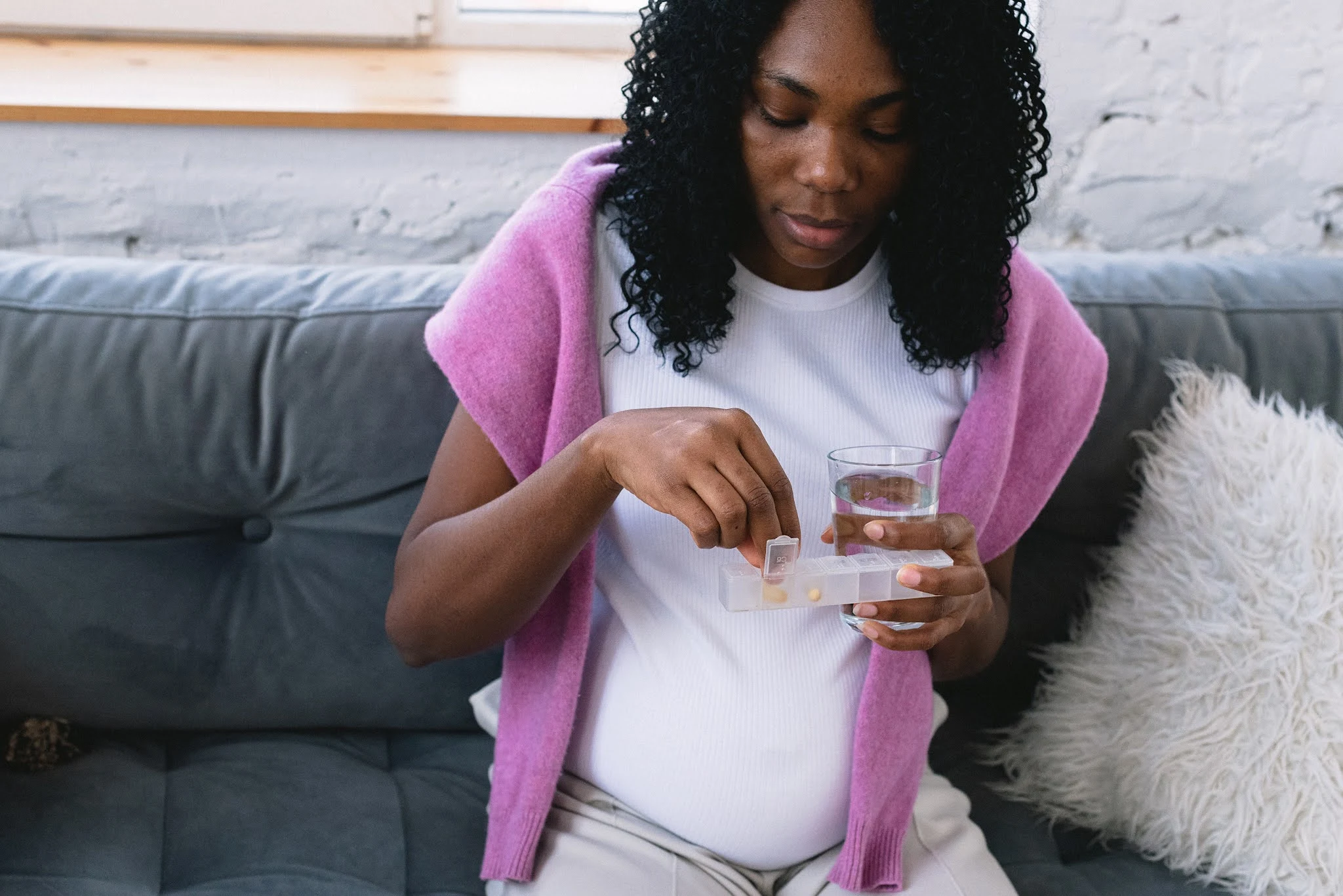Tips for Self-Examinations of the Breast
The significance of breast examinations
Breast cancer statistics and the need for screening are compelling: mammography has contributed to a nearly 40% reduction in breast cancer fatalities since 1990. Regular mammography and self-examinations can help you save your life by detecting irregularities early on.
Breast examinations also offer a secondary purpose: they help you become acquainted with your breasts. This may seem ludicrous; after all, they are your breasts, and you are inherently familiar with them. However, many women are unaware of lumps until they are detected during a mammogram. Simply stroking your breasts is insufficient; you must master the proper technique and recognize the signs.
How to do an effective self-examination
You're likely to have come across a guide or graphic demonstrating how to conduct a self-breast inspection. While these graphics are excellent for spreading awareness on social media, they may not always convey accurate and comprehensive information.
Choose a day after your period ends to conduct a self-examination. This helps prevent your breasts from becoming sensitive, puffy, or sore. If you are not menstruating, simply choose one day per month. Begin your assessment with a visual inspection. In front of a mirror, standing topless and slowly raise your arms, elevate each breast, and inspect for any irregularities. These include the following:
Changes in size, shape, or symmetry
Dimpling
Changes in the nipples
The presence of redness, ridges, or roughness
After that, it's time for the physical examination.
After that, it's time for the physical examination. Gently massage your breasts in spirals with the pads of your fingers, beginning at the nipple and working outward. Then, with your fingers, trace the circumference of the breast up toward the collarbone. Finally, massage the sides, paying special attention to the area around the armpit.

 |
| Photo by Tima Miroshnichenko from Pexels |
Yet, there are a few things you can do to prevent your menstruation from cramping your productivity. Read on and find out how you can effectively manage menstrual cramps at work.
Dealing with period cramps at work
Drink water—lots of it!
Being adequately hydrated can minimize dysmenorrhea (another term for menstrual cramps). One study shows that increased water intake can diminish the intensity of abdominal pain experienced during menstruation. Aside from reducing the severity of cramps, drinking water has also been shown to shorten the length of the bleeding period and improve the utilization of painkillers.
Working in an office makes it easy to be overwhelmed with so many things that you forget to sufficiently hydrate yourself. To help you meet your daily H20 requirements, even if you’re away from home, keep a one-liter water bottle handy. This way, you can easily reach for it to take quick sips of water from time to time without having to stop whatever task you’re presently engaged in. Just make sure, though, that your water bottle has a tight lid to prevent any accidental spills (especially on your computer!).
Have Healthful Lunches
You can actually eat your way to health, as well as menstrual cramp relief! Let’s first discuss the connection between eating healthy to reducing cramps.
When you have a lot of estrogen in your body, your uterine lining becomes abnormally thick. The denser the uterine lining, the more inflammatory prostaglandin hormones are produced to make your uterine muscles contract. This contraction helps you shed your uterine lining and causes menstrual cramps. Therefore, eating anti-inflammatory foods, such as fruits, vegetables, and whole grains, can diminish menstrual pain.
Having a diet rich in fiber can also reduce the amount of estrogen in your body. This is because the fiber helps your system cleanse itself of the excess estrogen. Refined foods, though, do not contain the dietary fiber you need to eliminate estrogen and prevent it from being reabsorbed by the body. This means that avoiding them can be a good idea, especially when you’re on your monthly cycle.
But the thing is, eating healthy at work can be quite a challenge. It can be tempting to just go for whatever fast food is available to get your lunch over and done with ASAP. Preparing your meals at home and bringing them to the office can help you commit to nutritious and well-balanced lunches that help combat menstrual pain.
Care for Vulvar
What are the benefits of vulvar and vaginal care?
What is a vulva, and what does it do?
What is the vagina?
What causes vaginal infections?
What is vulvar care?
What are some vulvar care tips?
7 superfoods that you should consume for a healthy vagina

Early detection results in a more favorable outcome.
Conduct early and routine tests.
Recognize Your Birth Control Options
Recognize Your Contraceptive Options
Contraception and family planning are not novel ideas. While humans have attempted to avoid conception for generations, the widespread availability of effective chemical birth control is a comparatively new development. In 1960, When the FDA approved the first birth control pill in the United States, it opened up new possibilities for women all over the country, allowing them to plan their careers, relationships, and children in wholly new and innovative ways. Numerous additional contraceptive methods have been developed since then.
Contraceptive methods
There are numerous types of contraception available to women, each with its own set of benefits and drawbacks. Within each category, various brands may add to the variety. While having too many options is rarely a bad thing, deciding which is best for you can be overwhelming.
Contraceptive pills
This is the most often-used method of birth control, though its use has waned in recent years. Birth control tablets are 91% effective and must be used daily to prevent pregnancy.
There are two types of tablets in this category: combination pills that include both progestin and estrogen and micro pills that contain only progestin. You and your doctor can discuss both alternatives to determine which is best for you.
Birth control pills are painless and readily available, but they must be used responsibly and on a daily basis. Just one missing dose can result in an unintended pregnancy. In addition, the pill is less effective than injections or intrauterine devices, though you should be protected if you take it on a consistent schedule every day.
Intrauterine implants
Intrauterine devices, or IUDs, are very small implants that are placed in the uterus. They are one of the most effective methods of contraception available, and they are available in two forms: copper and hormonal. Again, you and your doctor can review both alternatives to choose which is best for you.
Your IUD can last for years with little care required. Women can become pregnant immediately after the IUD is removed. This makes it the preferred method of birth control for women seeking a hands-off, convenient method that will not interfere with future family planning.
Below is a guide to perimenopausal bleeding to help you decide when it's time to see a doctor about your symptoms.
Normal can be a little difficult to define when it comes to menstruation. What is considered normal for one woman may not be for someone else. For instance, while the average interval between menstrual cycles is 28 days, a healthy cycle can last between 21 and 35 days.

As you get closer to menopause — which is defined as one year since your last menstruation cycle — you may notice that your normal schedule changes. Women's cycles frequently change in length during the years preceding menopause, which doctors refer to as perimenopause. Bleeding may become more intense or less intense. You may even skip a period on occasion. When these changes are combined with existing individual variation, it can be difficult to determine what constitutes a problem — and what does not.
Dr. Karen Carlson, an internal medicine specialist and associate professor at Harvard Medical School, provided some guidelines for women to use when determining which changes are normal variations and which should be brought to the attention of a physician. Here are her responses.
Q. Could it be common for women to have menstrual changes during perimenopause?
A. Menstrual changes are normal during perimenopause, which typically begins four years before the last menstrual period.
Q. When it comes to the years leading up to menopause, what kinds of changes are typical?
A. As a woman enters her late reproductive years in her forties, her cycles frequently become shorter. The intervals between periods begin to lengthen as perimenopause progresses. Menstrual changes can also be more dramatic, including missed periods and occasional episodes of heavier bleeding. After several years of irregular menstruation, menstrual periods cease entirely. It's critical to remember that no one-size-fits-all pattern exists, and women should never hesitate to report a concern to their physician.
Q. What kinds of bleeding should be brought to the attention of a medical professional?
A. Generally, more severe or prolonged bleeding (greater than seven days) is a cause for concern rather than the absence of bleeding. Between periods, continued irregular bleeding or spotting is not normal and should be reported. Keep in mind that even if you miss a period, pregnancy is still a possibility, even as fertility declines as menopause approaches.
Q. When should you consult with your doctor, and how long should you wait? Is a single abnormal cycle sufficient, or should you wait for several cycles?
A. I will say It depends on the magnitude of the change. Sudden onset of extremely heavy premenopausal bleeding should prompt a call to report the event. It is reasonable for a woman who is experiencing longer cycles or who skips a period to keep a menstrual diary for a few cycles and then consult with her doctor.
Whether you're pregnant or planning to get pregnant, it's critical to educate yourself on the precautions you should take to protect both you and your baby's health. There are numerous factors to consider, ranging from maintaining a healthy diet to developing a birth plan. To assist you, here are five suggestions for a healthy pregnancy.
1. Establish a birth plan
2. Pregnant Women Should Take Prenatal Vitamins
Giving birth to a child is one of the most memorable experiences a person can have. And the method of birth — vaginal or surgical cesarean section — can have an effect on your health and subsequent birth experience, if you have one. A frequently used calculator assists physicians in estimating the likelihood of a successful vaginal birth following a cesarean section. However, this tool may have contributed to existing health disparities, particularly between Blacks and whites, until recently. Is a newer version of this calculator capable of reversing this trend? And what can you do to improve your chances of having a vaginal birth after cesarean (VBAC), if that is important to you?
Why are cesarean births sometimes required?
Cesarean birth is a beneficial and necessary procedure in certain situations, including the following:
when labor fails to progress
when a parent expresses concern for the infant (such as growth restriction or heart rate issues during labor)
complications with the placenta
a very large baby
a breech presentation
when an infection or illness, such as HIV or genital herpes, may be transmitted to the infant during a vaginal birth.
What is Vaginal Yeast Infection?
Candida albicans, often known as "Candida vaginal infections," is the fungus that causes vaginal yeast infections. 75 per cent of all women will have at least one vaginal Candida infection in their lives, and up to 45 per cent will have two or more. When a woman's body is under stress from a bad diet, lack of sleep, sickness, or being pregnant or taking antibiotics, she is more prone to develop vagina yeast infections. Women with immune-suppressing illnesses like diabetes and HIV infection are also more vulnerable.
Symptoms
A vaginal yeast infection can cause the following symptoms:
Itching or soreness in the vaginal area
Discharge that is thick, white, and cheese-like.
Burning" sensation around the vaginal entrance, especially if urine comes into contact with the region.
During sexual intercourse, there is pain or discomfort.
Coloured tissue paper first appeared in the '50s according to the Toilet Paper World publication. One of the first things that became apparent back then was that doctors began warning people about the skin-damaging effects of colour additives. They were also concerned about the possible detrimental environmental impact.
Gonorrhoea is a sexually transmitted infection (STI) that is caused by the bacterium Neisseria gonorrhoeae or gonococcus gonorrhoea. It was previously referred to as "the clap."
How gonorrhoea is transmitted?
The germs that cause gonorrhoea are most frequently detected in penile discharge and vaginal fluid.
Gonorrhoea is easily transmitted between humans via the following routes:
Vaginal, oral, or anal intercourse that is not protected
Exchanging vibrators or other sex devices that have not been thoroughly cleaned or wrapped with a fresh condom after each usage
The bacteria can infect the womb's entrance (cervix), the tube that excretes urine from the body (urethra), the rectum, and, less frequently, the throat or eyes.
Additionally, the illness can be transmitted from a pregnant mother to her unborn child. If you're pregnant and suspect you may have gonorrhoea, it's critical to get tested and treated before giving birth.
Syphilis is a sexually transmitted disease (STD) caused by Treponema pallidum bacterium. Syphilis begins with an open sore (ulcer) that releases fluid containing syphilis germs. Contact with this ulcer or other infectious sores that develop later in the disease, generally during vaginal, oral, or anal intercourse, can spread syphilis. Syphilis, if left untreated, progresses through a succession of stages that affect various areas of the body, but some stages overlap:
Syphilis creates a painless ulcer called a chancre in the vaginal region, where the syphilis germs enter the body. This stage lasts between ten to ninety days (on average three weeks) after a person is exposed to someone who has syphilis. Without therapy, the sore resolves in around four to eight weeks.
Secondary syphilis – The syphilis germs spread throughout the body at this stage. This frequently results in a rash covering the majority of the body, as well as fever, aches and pains, and other symptoms. This stage lasts six to eight weeks after a person is introduced to syphilis.
Latent syphilis – This stage begins after the secondary stage has ended. Despite the absence of symptoms, the individual remains sick. This period can span several years, if not the entirety of an individual's life. Approximately one-third of latent syphilis patients develop tertiary syphilis.
Tertiary syphilis — At this stage, syphilis germs may severely harm numerous internal organs, including the brain and spinal cord. It often manifests within ten years of infection and can be fatal.
Pregnant mothers who have syphilis can transmit the bacteria to their infants, resulting in congenital syphilis. Syphilis congenital causes a range of skin and organ issues in babies and is often fatal. Pregnant women with syphilis also have a roughly 40% chance of having a stillborn baby.
What is chlamydia?
How can I determine if I have to take an STD test? Discover More
Chlamydia is an infection that is transmitted sexually and infects both men and women. It can harm a woman's reproductive system permanently and dangerously. Her inability to get pregnant in the future will be because of this. Chlamydia may induce a dangerous ectopic pregnancy, which is deadly in many cases (pregnancy that occurs outside the womb).
How is chlamydia transmitted?
Chlamydia can be transmitted by intercourse of the oral, anal, or vaginal kind with someone who already has it.
Even if your sex partner does not ejaculate, you might still catch chlamydia.
You can develop chlamydia again even if you've had it before and been treated. Chlamydia is a sexually transmitted disease transmitted after the occurrence of unprotected intercourse with someone who is also infected. Chlamydia can be transmitted to a baby during delivery if the mother is infected.
What is Urinary Tract Infection in Women?
A urinary tract infection is an infection that affects the organs responsible for producing and excreting urine. The kidneys, ureters (long, narrow tubes linking the kidneys to the bladder), bladder, and urethra are among these structures. When looking at urinary tract infections, medical professionals generally categorize them into two different types: lower tract infections and upper tract infections.
Infections of the lower tract — Cystitis is an infection of the bladder (bladder infection). Bacteria found in the intestine are the most common cause of lower urinary tract infections. Bacteria spread from the anus to the urethra and then to the bladder, they grow and cause infection.
Upper urinary tract infections affect the ureters and kidneys. These kidney infections are referred to as pyelonephritis. Upper urinary tract infections are often caused by germs travelling up the urinary system from the bladder into the kidney. They can happen when bacteria travel via the bloodstream from other parts of the body and settle in the kidney.
Women are significantly more likely than males to be affected because their urethras are shorter, allowing germs to enter the bladder more easily. Bacteria can move upward into the bladder during sexual intercourse. Additionally, the use of contraceptive diaphragms and spermicides may alter the natural bacterial environment around the urethra, increasing the risk of infection.
Pregnant women are at an increased risk of cystitis and pyelonephritis because of temporary changes in the physiology and anatomy of the urinary system. Kidney and bladder infections can be extremely dangerous for pregnant women and their unborn children since they raise the chance of preterm labour or delivery, as well as the death of the fetus or newborn infant.
The uterus and bladder are kept in their normal locations just above the inside end of the vagina by a "hammock" of supportive muscles and ligaments. Due to wear and tear on these pelvic supporting structures, the bladder floor and the bottom of the uterus bladder floor, sag through the muscle and ligament layers.
When this occurs, the uterus or bladder may protrude into the vaginal opening. In extreme situations, the sagging uterus or bladder might descend far enough that the bulge appears at or protrudes from the vaginal opening.
Uterine prolapse occurs when the uterus sags downward. When the bladder sags, this is referred to as bladder prolapse, which is also referred to as a cystocele.
Various stressors can lead to prolapse of the pelvic muscles and ligaments, resulting in uterine or bladder prolapse. The strongest stress on these muscles and ligaments occurs during delivery. Prolapse is more likely to occur in women who have had several pregnancies and vaginal delivery.
Constipation with a habit of regular straining to evacuate faeces and a chronic cough might contribute to prolapse. Additionally, obesity can put pressure on the pelvic muscles.
Support difficulties in the pelvis exacerbate during menopause, as the pelvic tissues rely on estrogen to maintain their tone, and estrogen levels decline the following menopause.
According to some physicians, almost half of all women may experience some degree of uterine or bladder prolapse in the years following childbirth. These conditions go undiagnosed and untreated in the majority of women. Only 10% to 20% of women with pelvic prolapse seek medical attention for their symptoms.
Protein is necessary for men to maintain muscle mass and strength as they age. According to research published online by JAMA Internal Medicine on July 13, 2020, the source of that protein may also influence how long people live. Scientists studied the diets of almost 400,000 people aged 50 and over who ate plant-based protein, red meat, and eggs. After then, they were tracked for more than 16 years. People who ate primarily plant protein rather than red meat or egg protein had a 13 per cent to 24 per cent decreased chance of dying from any cause.
Growth hormone helps the body utilise fat for energy and continues to play a role in protein creation throughout your life. Children that are deficient in growth hormone do not reach their full height potential and have short stature. In these children, the FDA approved a synthetic human growth hormone (HGH) as a substitute, which helps them grow taller.
Synthetic HGH became a popular but illegal performance-enhancing drug in the early 1980s. The hype around human growth hormone and superior athletic performance has always been bigger than reality.












